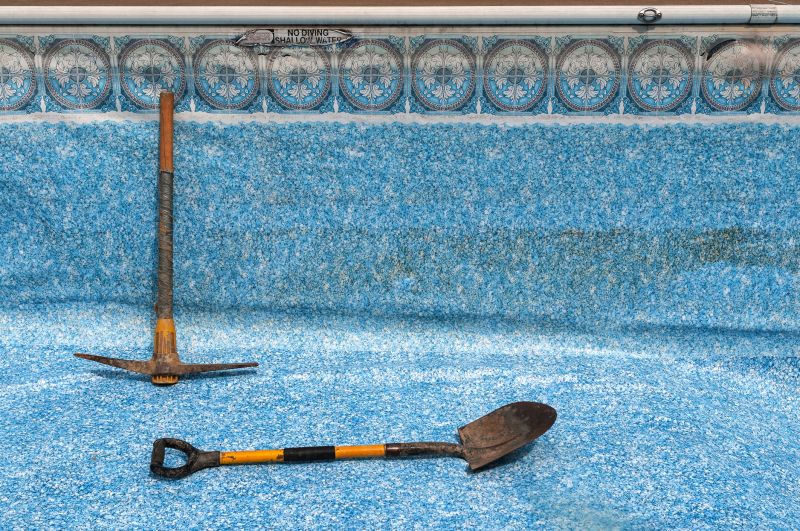Expert Picks for Pool Leak Detection Equipment
Find out which leak detection tools professionals rely on to pinpoint issues and prevent costly repairs.
 Detecting leaks in a swimming pool can be a challenging task, but having the right tools can make the process more manageable and accurate. Pool leak detection products encompass a variety of devices designed to identify potential issues, from subtle water loss to visible cracks or damage. These tools help pool owners and professionals pinpoint leak locations without the need for invasive procedures, saving time and resources. Common detection methods include pressure tests, dye tests, ultrasonic sensors, and electronic leak detectors, each suited for different types of leaks and pool configurations.
Detecting leaks in a swimming pool can be a challenging task, but having the right tools can make the process more manageable and accurate. Pool leak detection products encompass a variety of devices designed to identify potential issues, from subtle water loss to visible cracks or damage. These tools help pool owners and professionals pinpoint leak locations without the need for invasive procedures, saving time and resources. Common detection methods include pressure tests, dye tests, ultrasonic sensors, and electronic leak detectors, each suited for different types of leaks and pool configurations.
Top Overall Option
Comprehensive Pool Leak Detection Kit
A versatile and detailed kit that combines multiple detection methods, including dye testing, ultrasonic sensors, and pressure gauges, providing a comprehensive approach to identifying pool leaks. Designed for both DIY users and professionals, it offers clear instructions and reliable results for various pool types.
Types of Products For Pool Leak Detections
Dye Testing Kits
Use colored dyes to observe water escaping from leaks, suitable for quick and straightforward detection.
Ultrasonic Leak Detectors
Employ sound wave technology to locate leaks in plumbing lines or hidden areas without invasive procedures.
Pressure Testing Devices
Monitor water pressure levels to identify drops indicating potential leaks in the system.
Electronic Leak Detectors
Use electronic sensors to detect changes in water flow or pressure, often with digital readouts.
Thermal Imaging Cameras
Capture infrared images to spot temperature differences caused by leaks or water infiltration.
Acoustic Sensors
Detect the sound of escaping water or air, useful for underground or hard-to-access leaks.
Water Level Indicators
Monitor water level fluctuations over time to identify slow leaks.
Chemical Leak Detection Tablets
Add tablets that react with water to reveal leak points through color changes.
Flow Meters
Measure water flow rates to detect abnormal losses indicating leaks.
Leak Detection Foams
Apply foam solutions to suspected areas to see if bubbles form, indicating leaks.
Popular Choices
Widely used for their non-invasive approach and ability to locate hidden leaks in plumbing.
Commonly recommended for quick leak identification in pools and plumbing systems.
Preferred for assessing system integrity and detecting pressure drops indicative of leaks.
Increasingly popular for their ability to visualize temperature variations caused by leaks.
Trusted for their precision in detecting water and air leaks in complex systems.
Often used in conjunction with other tools to quantify water loss over time.
Valued for their ability to locate underground leaks through sound detection.
Affordable and easy-to-use options for preliminary leak screening.
Useful for detecting slow leaks by tracking water level changes.
Simple application for visual confirmation of leak points in accessible areas.
Many leak detection products are user-friendly, allowing even those without technical expertise to perform basic assessments. For example, dye testing involves adding a special dye to the water to observe where it escapes, indicating a leak point. Ultrasonic leak detectors use sound waves to identify escaping air or water, providing a non-invasive way to locate leaks hidden beneath pool surfaces or underground plumbing. Electronic sensors can detect changes in water pressure or flow, which may suggest the presence of a leak. Combining multiple detection methods often yields the most reliable results.
When choosing pool leak detection products, it’s important to consider compatibility with your pool type, ease of use, and the level of precision required. Some products are designed for professional use, offering advanced features and higher sensitivity, while others are suitable for DIY enthusiasts. Properly identifying the source of a leak can prevent further water loss, reduce chemical and energy costs, and help maintain the pool’s structural integrity. Investing in quality detection tools can provide peace of mind and ensure timely repairs, extending the lifespan of your pool.
Overall, the market offers a broad range of products tailored to different needs and budgets. Whether you suspect a minor leak or need to locate a significant breach, there are solutions available to suit your specific situation. Understanding the various detection options and their applications can help you make informed decisions and maintain your pool effectively.
Key Buying Considerations
- Identify the type of leak suspected, such as surface cracks, underground plumbing, or fittings.
- Determine whether a simple dye test suffices or if more advanced tools like ultrasonic or thermal imaging are needed.
- Assess the compatibility of detection devices with your pool type and existing infrastructure.
- Consider ease of use, especially if you plan to perform the detection yourself without professional assistance.
- Evaluate the sensitivity and accuracy of the detection method to ensure reliable results.
- Look for products that include clear instructions or customer support for troubleshooting.
- Check for durability and weather resistance if devices will be used outdoors or in harsh conditions.
- Review the detection range, especially for ultrasonic and acoustic sensors, to match your pool size and complexity.
- Factor in whether the product is reusable or disposable, affecting long-term costs.
- Consider integration with other pool maintenance tools or systems for comprehensive monitoring.
- Read customer reviews and ratings to gauge real-world effectiveness and user satisfaction.
- Verify the availability of calibration options to maintain detection accuracy over time.
- Determine if additional accessories or replacement parts are needed for ongoing use.
- Assess the overall value based on features offered relative to the price point.
- Ensure the product complies with safety standards and manufacturer guidelines.
